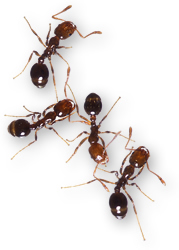Early Indications Show Wheat Escaped Freeze Injury
AMARILLO (Texas A&M Release, April 13, 2007) - The High Plains wheat crop appears to have escaped injury from temperatures that dipped into the low 20s F for an extended period, said a Texas Cooperative Extension specialist.
After scouting several regions and visiting with concerned producers, Dr. Brent Bean, Extension agronomist, said he thinks the wheat denseness and the soil temperature may have insulated the crop from the cold.
Using the weather station data from the Texas High Plains Evapotranspiration Network, Bean determined that the southwest corner of the Panhandle, in the Bovina-Muleshoe-Dimmitt area, was the most likely area for damage.
"That's where it was the coldest for the longest, and more than likely, if there was any injury, it should have been seen there," he said on Thursday after scouting that region. "It is a little early, but preliminary observations indicate the wheat came out of the cold conditions in surprisingly good shape."
The reason, Bean said, is the wheat has a good canopy and soil temperatures were warming prior to the cold front moving into the area. That tended to insulate the wheat against the air temperatures.
Some temperatures dropped to 24 F in that region, he said, staying below 26 F for more than 30 hours.
"Those are temperatures where we certainly can get freeze damage," Bean said. "We've seen a little bit of leaf burn, but surprisingly not even much of that."
And leaf burn does not indicate a loss of production. Producers should recheck their fields next week, after possible freeze injury symptoms have had more time to show up, Bean said.
Freeze damage has to be analyzed by splitting the tiller and looking at the immature head, he said. If it is green, it is OK. He said because temperatures have been fairly cool since the freeze, it is possible that once it heats up, some injury might start to show up.
 "But right now, it looks very promising," Bean said.
"But right now, it looks very promising," Bean said.
Writer: Kay Ledbetter, 806-677-5608,skledbetter@ag.tamu.edu
Contact: Dr. Brent Bean, 806-677-5600,bbean@ag.tamu.edu
Subscribe to AgFax: Southern Grain or our other free reports covering cotton, rice and peanuts.









